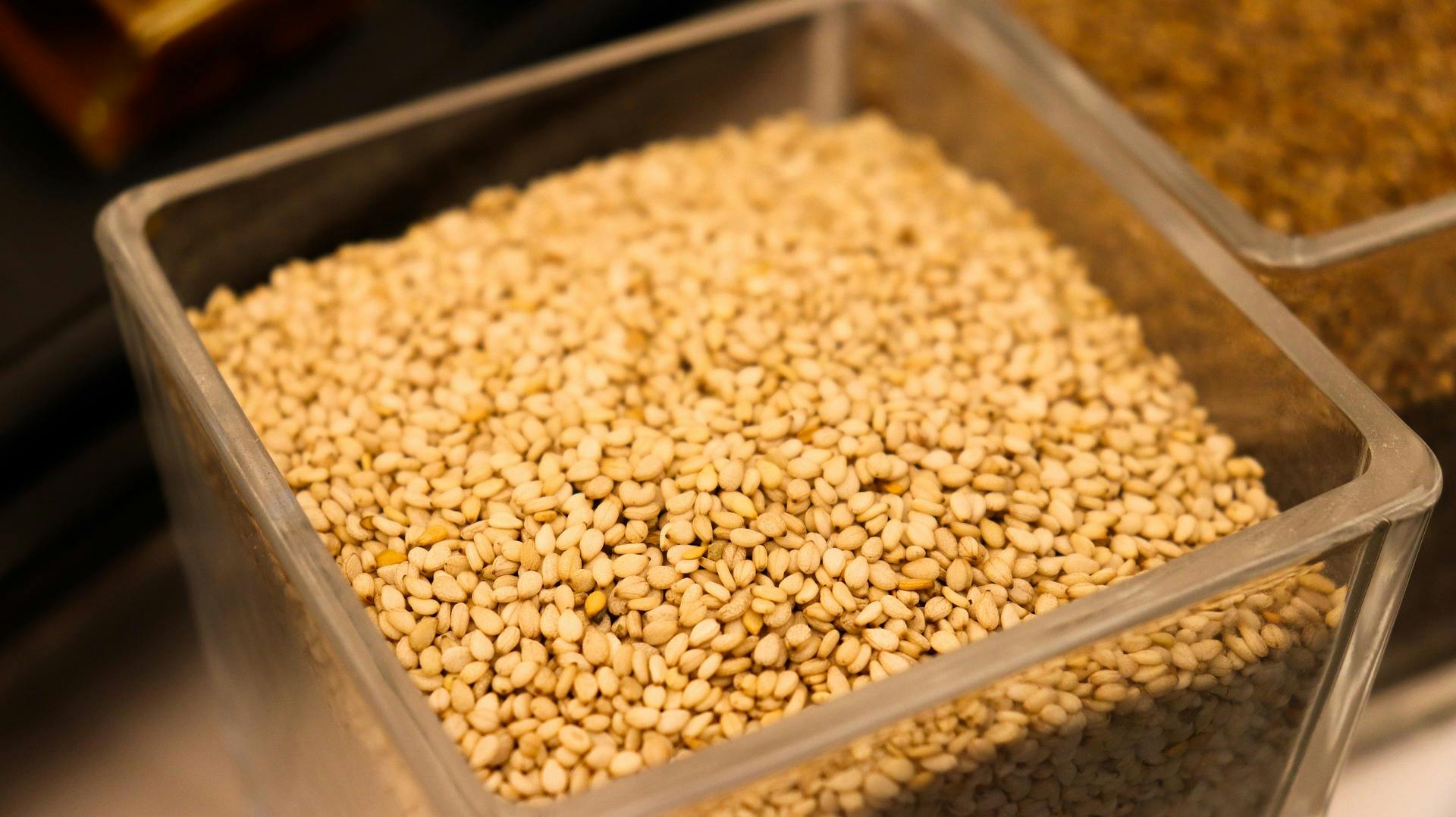your cart
Your cart is empty.
Recipes
General Articles
Why is Sesame Important in Chinese Cuisine?

Whether sprinkled, poured or spread, sesame seeds are used extensively in Chinese cuisine, and throughout the whole of Asia. We take a look at what these seeds are used for in Chinese cooking and the benefits that they can bring.
History of the Sesame Seed
Sesame has been used in cooking for thousands of years, with records of the magical seed dating back to 3000 BC. Their history spans further back than that though, with Assyrian myths detailing how gods drank sesame seed wine on the night before they made the Earth.
Believed to have originated in either Africa or India, the sesame seed has been a staple ingredient in many dishes from these areas throughout history, with sesame oil used by Babylonians, and references to the Egyptians turning the seeds into sesame flour.
With sesame seeds ingrained in the history of Africa and Asia, it isn’t clear when exactly the tiny seeds made their way over to China, with some reports saying sesame oil was used to light lamps over 5000 years ago, whereas others maintain that the seeds were only introduced around 2000 years ago.
Regardless of when and how sesame seeds got to China, they are now firmly at home on the shelves of Chinese kitchens and are included in many a dish.

How is Sesame Used in Cooking?
Sesame seeds are used in a wide variety of ways; sprinkled whole over salads, ground into a paste for sauces or crushed for the oil to be used in dips and marinades.
Sesame Oil
For the most part, and unlike other oil types, sesame oil is not used as a cooking oil, as it tends to burn too easily, and the intense flavour can overpower the taste of the ingredients cooked. Instead, it is more common for the oil to be sprinkled over a dish, moments before it is served up.
Sesame oil is also used by some for medicinal purposes, as it is thought to contain antioxidants and promote a range of health benefits from stimulating brain activity to treating infections.
Sesame Seeds
The sesame seed as a whole is also used frequently in many Asian cuisines. Chinese cooking makes use of both black and white sesame seeds, and they are used to add flavour to sweet treats such as biscuits, cakes, and sesame seed balls which are popular desserts.
The white seeds present a nutty flavour and are commonly toasted before being used, while the black seeds have a slightly more bitter taste and are not usually heated. For the most part, the choice between black or white sesame seeds is more down to aesthetic reasons than anything to do with flavour!
As with sesame oil, sesame seeds provide a wide range of nutrients that are essential to a healthy lifestyle. They are an excellent source of protein and can provide calcium and minerals, making them a great choice for those following a diet free of meat or dairy.
Sesame Paste
Unlike tahini, sesame paste in China is made from toasted sesame seeds, enhancing the taste for a richer experience.
With a colour and consistency similar to smooth peanut butter, sesame paste is used as a dipping sauce, stirred into noodles, or simply as a spread. It will usually be found in jars where it may have been combined with soybean oil to preserve it.
If you would like to cook with sesame seeds, or other oriental nuts and beans, then check out the range we have available online!
this site uses cookies
We and our advertising partners use cookies on this site and around the web to improve your website experience and provide you with personalised advertising from this site and other advertisers. By clicking allow, you accept the placement and use of these cookies for these purposes. Learn More


